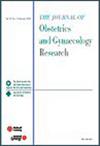The impact of the level by which women were influenced by the earthquake on their menstrual cycles
Abstract
Aim
The impact of the Kahramanmaraş earthquake on the menstrual cycles of surviving women was investigated in this research.
Methods
The study included 233 single women aged 15–49 affected by the earthquake. An online questionnaire that was created on Google Forms and whose link was sent to the women via the WhatsApp application was used to collect the data. This questionnaire included a descriptive information form, the impact of event scale (IES), and the Visual Analog Scale.
Results
The duration of women's menstrual bleeding decreased following the earthquake, their menstrual cycles became irregular, and hormonal drug use to regulate the cycle, the occurrence of dysmenorrhea, and its severity increased (p < 0.05). The mean IES scores of those reporting that the amount of menstrual bleeding decreased, that their cycles became irregular, and that the severity of dysmenorrhea increased following the earthquake were significantly greater (p < 0.05). The results of the binary logistic regression analysis indicated that when the effect of the earthquake on women increased by one unit, as shown by their total IES score, the risk of change in the amount of menstrual bleeding increased by 0.046 times (p = 0.000), the risk of irregular menstrual cycles increased by 0.022 times (p = 0.005), and the risk of experiencing severe dysmenorrhea increased by 0.028 times (p = 0.000).
Conclusions
Natural disasters such as earthquakes negatively affect women's menstrual cycles. It is recommended that health professionals consider that women's menstrual cycles will be affected following disasters and support them in improving their menstrual cycles.

 求助内容:
求助内容: 应助结果提醒方式:
应助结果提醒方式:


